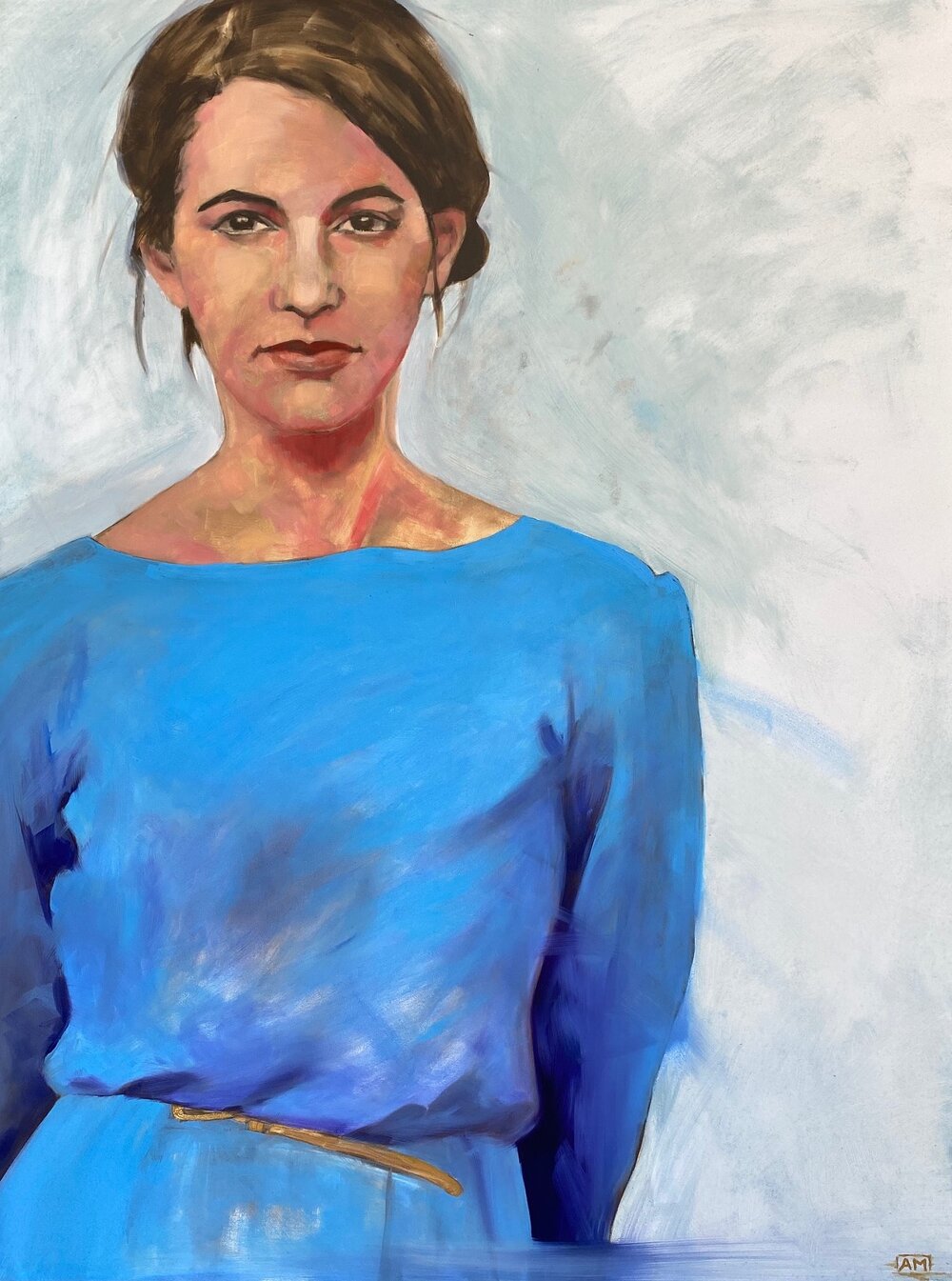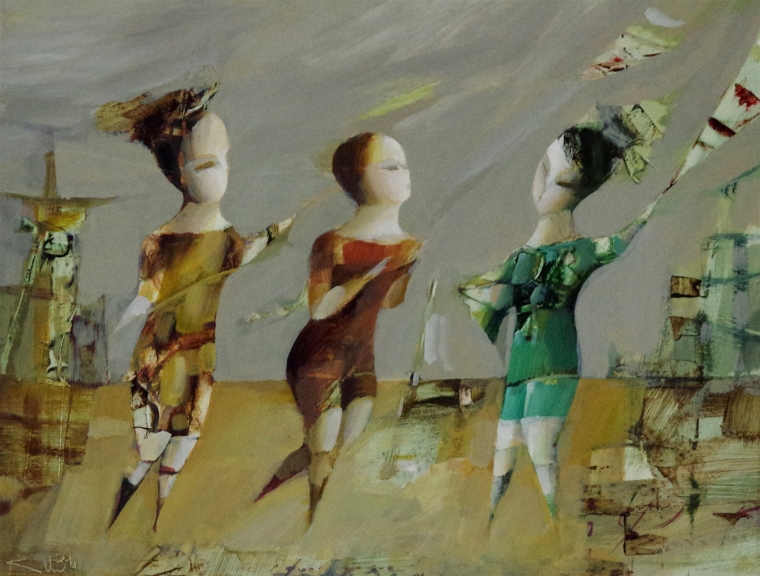The Effect of Figurative Oil Painting on Modern Art and Society
The Effect of Figurative Oil Painting on Modern Art and Society
Blog Article
The Development of Metaphorical Oil Painting: Understanding Its Historical Significance and Modern Interpretations
The advancement of figurative oil painting functions as an engaging lens where to take a look at the interplay in between imaginative expression and historical context. From the careful naturalism of the Renaissance to the stirring power of the Baroque, each period has added layers of meaning and technique to this classic medium. Contemporary musicians, drawing from this rich heritage, are currently reinterpreting the human figure in means that test typical stories. As we check out these makeovers, one need to take into consideration exactly how the dialogue between existing and past informs not only creative method but also societal representations in a significantly intricate globe.
Origins of Metaphorical Oil Paint
The beginnings of metaphorical oil painting can be mapped back to the very early Renaissance in Europe, specifically in the 15th century. The development of oil paint allowed for greater depth of shade and detail, enhancing the realism and vibrancy of their work.

In this transformative age, figures were frequently depicted within contextually rich atmospheres, showcasing not only their physical features but likewise their mental states. Pioneers such as Jan van Eyck and Titian used the tool's versatility, utilizing layering methods to accomplish luminosity and structure. This innovation promoted the portrayal of intricate fabrics and the subtleties of skin tones, contributing to the development of portrait and narrative scenes.
Additionally, the Renaissance focus on humanism cultivated a gratitude for individualism, which consequently influenced musicians to create more relatable and dynamic figures - figurative oil painting. Consequently, metaphorical oil paint arised as an effective lorry for storytelling and emotional involvement, laying the foundation for future artistic movements and designs
Secret Historical Motions
Considerable historical activities have shaped the advancement of metaphorical oil painting, each adding one-of-a-kind philosophies and techniques that broadened the tool's possibilities. The Renaissance marked a turning point, highlighting realism and the human form, with musicians like Leonardo da Vinci and Michelangelo pressing the borders of anatomical precision and point of view. Following this, the Baroque period brought dramatic contrasts of light and shadow, exhibited by Caravaggio, that infused spiritual themes with intense emotionality.
The 19th century introduced Romanticism and Realistic look, where musicians such as Delacroix and Courbet challenged classic ideals, concentrating on specific expression and daily life. The introduction of Impressionism further transformed the tool by stressing the impacts of light and shade, resulting in a separation from standard depiction.
In the early 20th century, activities like Expressionism and Cubism redefined figurative paint through abstraction and the exploration of psychological depth. Each of these motions not just reflected the social adjustments of their times yet also prepared for contemporary interpretations. The interaction in between these historical movements has produced an abundant tapestry of approaches and designs, affecting modern-day musicians in their quest of catching the human experience on canvas.
Techniques and Materials Advancement

Throughout the Baroque duration, strategies such as chiaroscuro and sfumato arised, enhancing the psychological vibration of figurative make-ups. Musicians started to explore glazes and impasto, controling structure and luminance. By the 19th century, innovations like making use of pre-mixed paints in tubes transformed availability, permitting musicians to paint en plein air and capture the fleeting results of light.
The 20th century observed the intro of artificial pigments and mediums, which expanded the palette and altered the consistency of oil paints. In addition, the expedition of new application techniques, such as combination knives and brushes of differing stiffness, additional diversified artistic expression. Jointly, these improvements show the advancing relationship in between products, methods, and the artistic vision integral in metaphorical oil painting.

Contemporary Interpretations
Contemporary analyses of metaphorical oil paint reflect a dynamic dialogue in between tradition and advancement, where musicians challenge developed standards and discover varied styles. This evolution shows up in numerous methods, as modern artists blend timeless techniques with contemporary concepts, usually addressing social, political, and personal narratives.
Many practitioners attract motivation from historic works, yet they instill their items with contemporary perspectives, utilizing the human kind as a lorry for commentary on identity, gender, and culture. visit our website Artists significantly experiment with abstraction, distortion, and multimedias, which allows for a broader analysis of the figure and its context.
Furthermore, using vibrant shade palettes and unique compositions frequently serves to disrupt standard viewing experiences, provoking crucial interaction from target markets. This shift in emphasis extends past appearances; it shows an expanding awareness of the complexities of human experience in an interconnected globe.
As figurative oil painting remains to advance, it continues to be a vital medium for exploring the subtleties of modern life, personifying both a respect for heritage and a commitment to modern idea. The outcome is a rich tapestry of expression that resonates with the intricacies of the contemporary human condition.
Impact on Modern Art
The impact of figurative oil painting on modern-day art is extensive, as it has continually motivated a myriad of creative movements and techniques throughout the 20th and 21st centuries. From Expressionism to Surrealism and beyond, the expedition of the human figure has actually remained a central motif, enabling musicians to convey complex emotions and narratives. This emphasis on figurative depiction has actually led to a re-examination of traditional strategies, causing ingenious strategies that mix realism with abstraction.
Additionally, contemporary artists have actually welcomed figurative oil paint as a way to resolve social and political problems, using the medium to test assumptions of sex, society, and identity. The resurgence of interest in figurative work in recent years shows a wishing for connection in a significantly electronic globe, where human experience and emotion are extremely important.
In addition, the dialogue between metaphorical oil painting and contemporary art appears in the works of musicians such as Kehinde Wiley and Jenny Saville, who draw on historic recommendations while infusing their pieces with contemporary importance. Ultimately, metaphorical oil paint remains to shape and redefine modern artistic expression, emphasizing its enduring significance in the art world.
Verdict
The evolution of figurative oil paint underscores its historical value and flexibility throughout different imaginative movements. From the naturalism of the Renaissance to the stirring expressions of the Baroque and the cutting-edge techniques of modernity, this tool has pop over to this web-site actually consistently transformed. Contemporary interpretations reflect vibrant shades and unusual compositions, cultivating crucial interaction with social and political motifs. more tips here Inevitably, metaphorical oil painting remains an essential tool for discovering the human experience, resonating exceptionally in today's digital landscape.
The development of metaphorical oil paint offers as an engaging lens through which to analyze the interaction between imaginative expression and historic context.Considerable historic motions have actually shaped the evolution of metaphorical oil paint, each adding one-of-a-kind philosophies and strategies that expanded the medium's opportunities.As historical activities shaped the trajectory of metaphorical oil paint, the products and methods utilized by artists have likewise undertaken considerable transformations. figurative oil painting.The influence of figurative oil paint on modern-day art is extensive, as it has continually motivated a myriad of imaginative motions and techniques throughout the 20th and 21st centuries.The development of metaphorical oil paint underscores its historic significance and versatility across different creative movements
Report this page